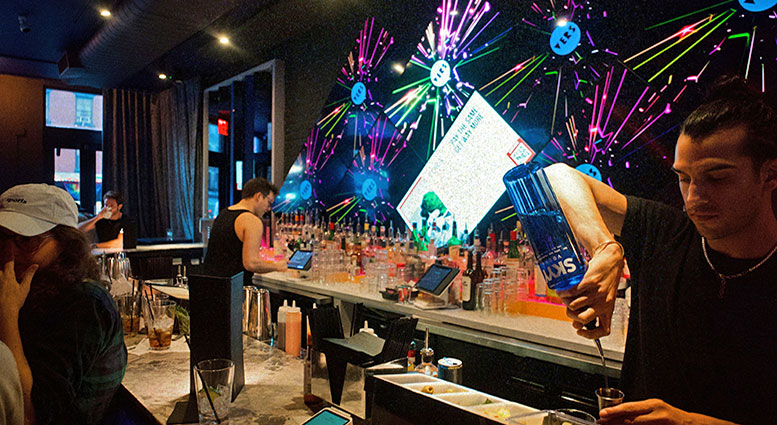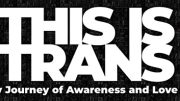The Historical Context of Gay Cruising And Its Evolution Through the Years
By: Anthony T. Eaton* / Guest Columnist / Special for TRT—
The history of gay cruising is a multi-faceted journey that reflects the complex relationship between LGBTQ+ individuals and societal attitudes toward their expressions of love and desire. From clandestine encounters in the shadows to the emergence of designated spaces, the evolution of gay cruising provides a lens through which we can explore the struggle for acceptance, identity, and the pursuit of love in the face of societal norms.
The roots of gay cruising can be traced back to a time when gay, lesbian, or trans people were heavily stigmatized, criminalized, and often considered taboo. In the 19th and early 20th centuries, societies across the world largely suppressed open expressions of same-sex desire. Amid this oppressive atmosphere, gay individuals sought discreet ways to connect, leading to the clandestine practice of cruising in public spaces.
Urban centers became the backdrop for these encounters’ public parks, restrooms, and dark alleys became the canvas on which LGBTQ+ individuals painted clandestine expressions of love. However, these encounters were not without risk, as arrests and persecution were common, reflecting the prevailing social attitudes of the time. The potential for violence was also a significant danger to those practicing the art of cruising.
Ways to get together
One of the ways individuals connected was through a unique language that included the hanky code. Originating in the LGBTQ+ community, this code is a discreet and intricate system of communication primarily used by gay men. In the context of gay cruising, the hanky code becomes a non-verbal language that facilitates connections between individuals seeking like-minded partners for consensual encounters.
The code involves wearing different-colored handkerchiefs in the back pocket of one’s jeans, with the color and placement
conveying particular desires or preferences. Each hue signifies a distinct interest, ranging from relatively tame to more explicit preferences, providing a subtle means of communication in social spaces as well as cruising.
Other forms of non-verbal communication include foot tapping, where individuals use discreet movements of their feet to signal interest. Subtle looks and eye contact play a crucial role in the non-verbal language of cruising. A lingering gaze or a specific kind of eye contact can convey interest, consent, or an invitation to engage without the need for spoken words.
Subtle looks and eye contact play a crucial role in the non-verbal language of cruising. A lingering gaze or a specific kind of eye contact can convey interest, consent, or an invitation to engage without the need for spoken words.
60s, 70s & 80s
In the 1960s and 1970s, a significant shift in societal attitudes towards sexuality began to take place. The Sexual Revolution challenged traditional norms, sparking a broader conversation about sexual freedom. As the gay rights movement gained momentum, advocating for equal rights and societal acceptance, some urban spaces began to transform into more tolerant environments.
During this period, gay bars and clubs became sanctuaries for the LGBTQ+ community, offering a sense of belonging and safety. However, the need for more discreet and spontaneous connections persisted, leading to the continued practice of cruising. Public spaces remained important, but there was a gradual move towards creating dedicated venues where gay men could meet openly.
The 1980s would see a huge change with the AIDS crisis, which disproportionately affected the gay community. The epidemic cast a dark shadow over gay culture, leading to increased discrimination and stigmatization. Most places like bathhouses and bookstores were closed in the name of public safety. Public spaces traditionally associated with cruising became riskier as the fear of infection compounded the challenges faced by LGBTQ+ individuals. AIDS brought about a change of attitude about sexual behaviors as safer sex practices and education initiatives emerged within the community.
21st Century
The turn of the 21st century and the advent of technology marked a new chapter in the history of gay cruising. The rise of online dating platforms and social media provided a virtual space for LGBTQ+ individuals to connect and express themselves without the constraints of physical locations. This shift profoundly impacted the dynamics of cruising, offering more options for connection while reducing the risks associated with traditional public spaces.
The history of gay cruising is a testament to the resilience and resourcefulness of the LGBTQ+ community in the face of societal challenges. From clandestine encounters in the shadows to the emergence of openly gay spaces, the evolution of cruising reflects the ongoing struggle for acceptance and the pursuit of love. As societal attitudes continue to evolve, so too will the ways in which LGBTQ+ individuals navigate spaces of liberation and confront the enduring stigma that has shaped our history.
*Anthony Eaton is a freelance writer living in Saint Paul, MN. His work has been featured in online and print publications around the world. In addition to writing, Anthony started a writers group called The Writers Block, filling a void in the local arts community.









